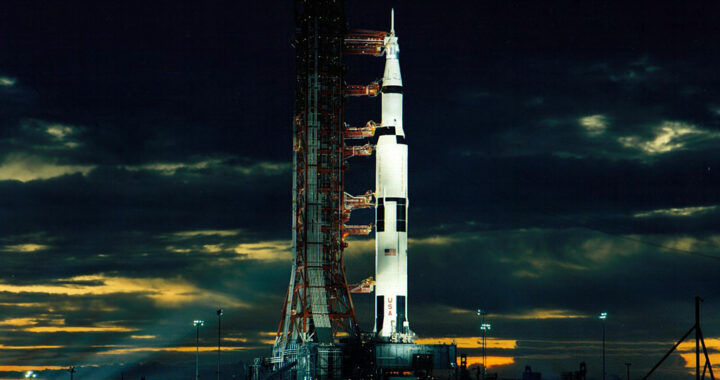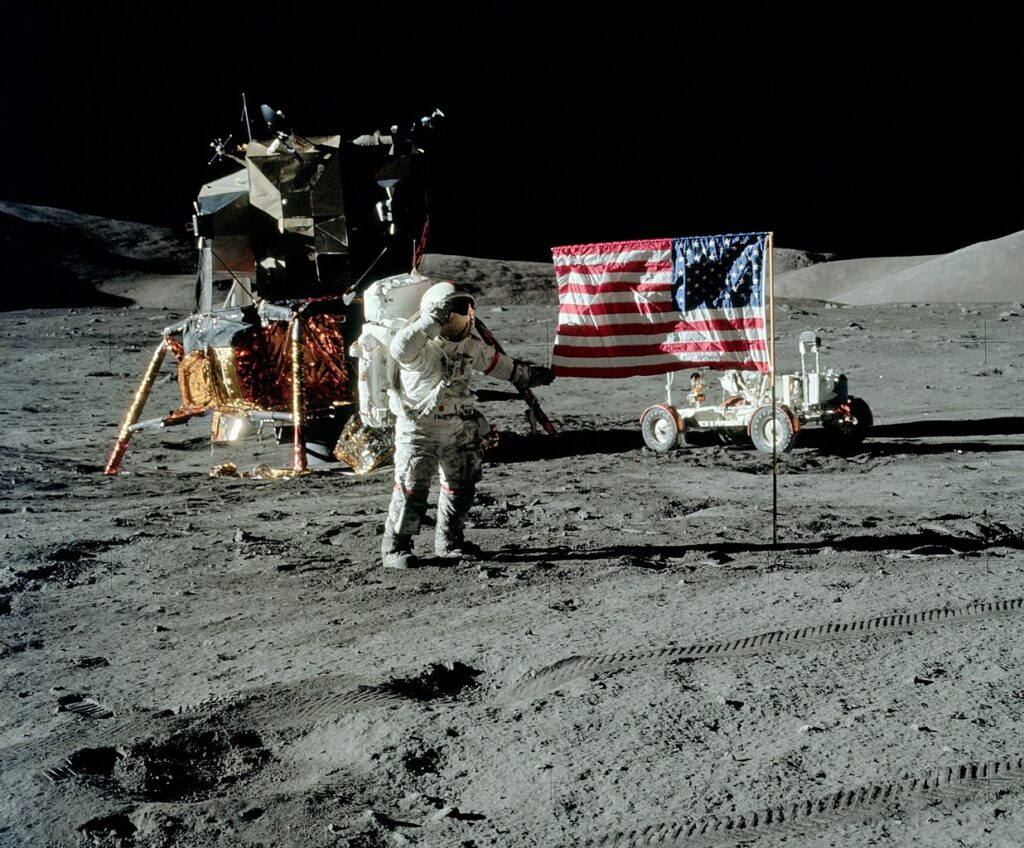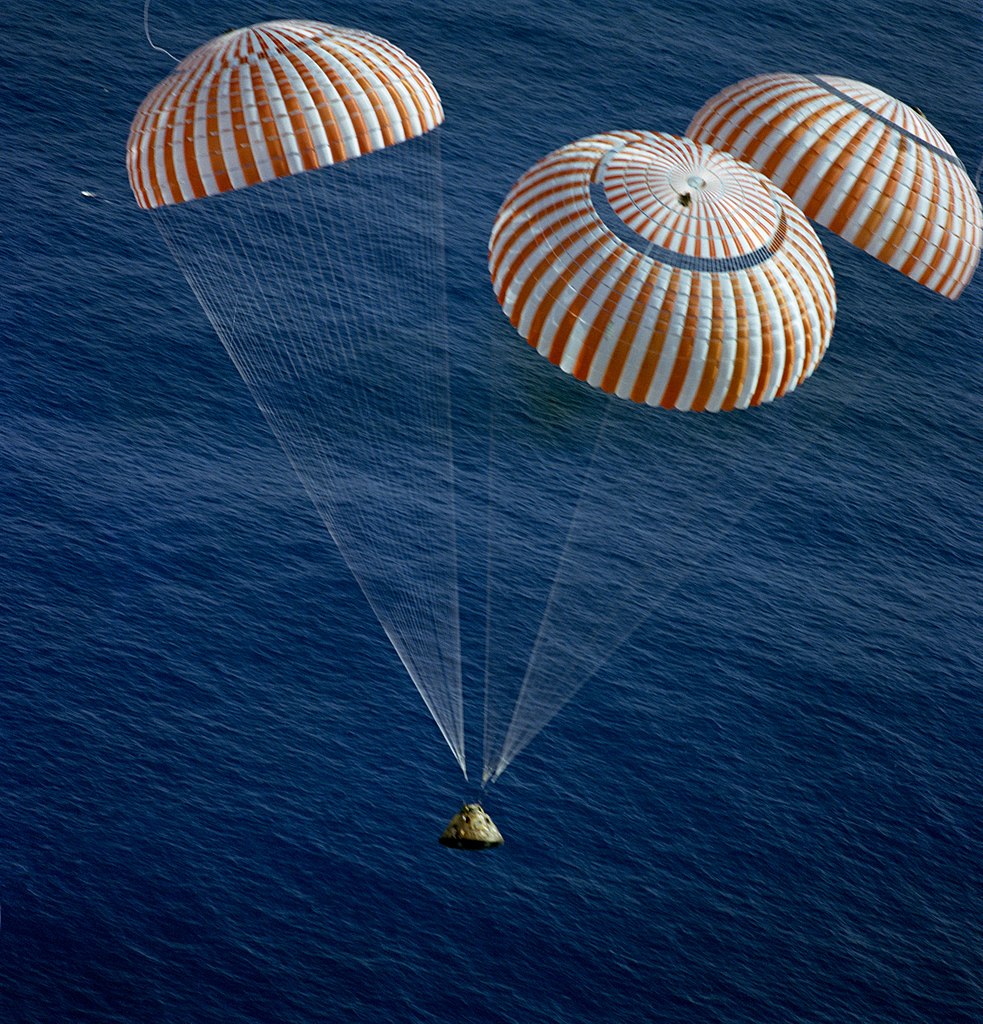Apollo 17: The Last Lunar Odyssey: A Journey to the Moon’s Ancient Highlands
by Patrick Wilson
On December 7, 1972, a thunderous roar echoed across the Florida landscape as a Saturn V rocket, a majestic pillar of fire and steam, pierced the heavens. Aboard this behemoth of technology were three astronauts: Commander Eugene Cernan, a seasoned astronaut with a steely gaze and a calm demeanor, Lunar Module Pilot Harrison Schmitt, a geologist with a thirst for lunar secrets, and Command Module Pilot Ronald Evans, a stoic observer tasked with safeguarding their cosmic voyage. Their mission: Apollo 17, the final lunar landing of NASA’s intrepid Apollo program.
Their destination: Taurus-Littrow Valley, a lunar landscape etched with the scars of time, a tapestry of craters, mountains, and plains, whispering tales of the Moon’s ancient past. The site, meticulously chosen by scientists and engineers, promised to unveil the secrets of the Moon’s early formation and history.
After a three-day odyssey through the celestial void, the Apollo 17 crew entered lunar orbit, the Earth a shimmering blue marble suspended against the backdrop of the cosmos. On December 11, Cernan and Schmitt prepared for their descent to the lunar surface, their hearts pounding with anticipation. With Cernan at the helm and Schmitt his trusty companion, the Lunar Module, nicknamed “Challenger,” detached from the Command Module, “America,” and began its graceful descent towards the Moon’s powdery surface. Evans, a beacon of stability in lunar orbit, remained aboard America, ensuring the safe return of his crewmates.
Apollo 17 Lunar Module Landing on the Moon
At 7:54:57 p.m. CST, Challenger’s metallic legs gently touched down on the Moon’s surface, marking the final lunar landing of the Apollo program. Cernan and Schmitt emerged from their lunar chariot, their footsteps leaving the first imprints on the ancient highlands. They were the first humans to set foot on this primordial terrain, pioneers venturing into the realm of lunar antiquity.
Apollo 17 Astronauts Eugene Cernan and Harrison Schmitt Collecting Lunar Samples
Over the next three days, Cernan and Schmitt embarked on three lunar excursions, or EVAs, traversing a total of 22 miles (35 kilometers) in their Lunar Roving Vehicle, a buggy designed to conquer the Moon’s rugged terrain. With meticulous precision, they collected 110.4 kilograms (243 pounds) of rock and soil samples, their hands carefully scooping up the lunar treasures that held clues to the Moon’s past. They conducted geological surveys, mapping the lunar landscape and documenting its features, their minds ablaze with the thrill of scientific discovery. And they deployed scientific instruments, sentinels of knowledge, designed to gather data on the Moon’s composition, its magnetic field, and the cosmic rays that bombard its surface.
Among their remarkable discoveries were orange soil, a rare lunar material thought to be formed from volcanic eruptions, a testament to the Moon’s fiery past. They unearthed ancient highland rocks, some older than the Earth itself, bearing the imprints of cosmic collisions and the passage of eons. These findings, like Rosetta stones of the cosmos, provided invaluable insights into the Moon’s geological history and its connection to Earth’s formation.
Apollo 17 Returns to Earth
On December 14, Cernan, with a heavy heart, made history as the last person to walk on the Moon. As he prepared to board the Challenger for ascent, he paused, his eyes sweeping across the lunar landscape, absorbing the grandeur of the moment. With a voice etched with emotion, he spoke words that would forever be etched in the annals of space exploration: “I know what you mean because I’ve been there. So in a very personal sense, I can say that each of us is a part of that history.”
Cernan and Schmitt reunited with Evans in lunar orbit, their lunar adventure complete. On December 17, they began their journey back to Earth, leaving behind the Moon, their celestial companion for the past three days. On December 19, the Apollo 17 spacecraft splashed down in the Pacific Ocean, marking the end of a remarkable mission that expanded our understanding of the Moon and left an indelible mark on human history.
Apollo 17, the swansong of the Apollo program, stood as a testament to the power of human exploration, the boundless curiosity that drives us to venture into the unknown. It was a mission that not only brought back lunar samples and scientific data but also ignited a deeper appreciation for our place in the universe, reminding us that we are not just inhabitants of Earth but also voyagers of the cosmos.
** This piece was created with the help of ai.


